The music for the assembly hall (“After (Post)”, premiere)
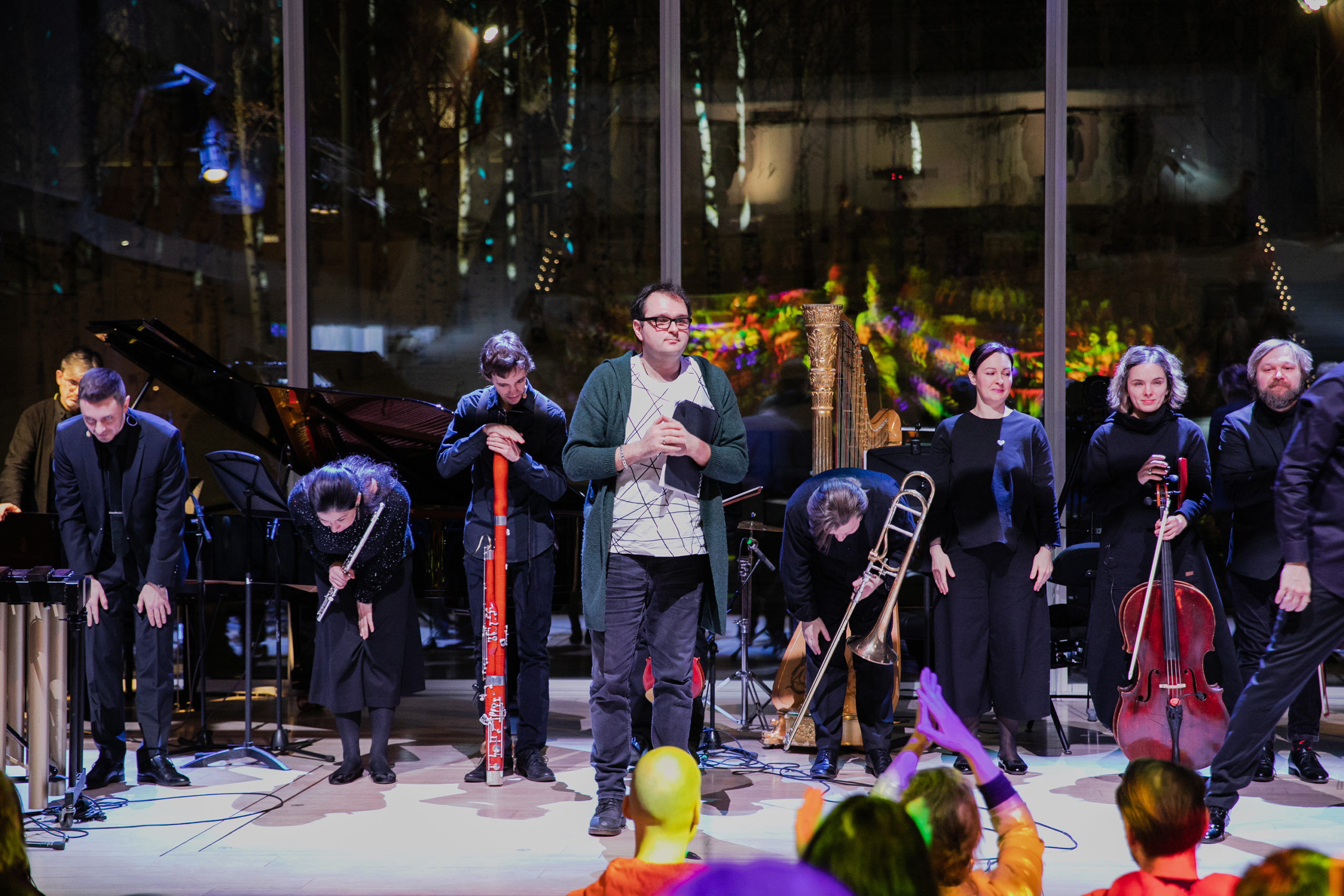
One of the last musical events of the past year was the world premiere of the composition “After” (Post) by Vladimir Gorlinsky. The new piece turned out to be both daring and traditional.
Gorlinsky’s work was commissioned by the V-A-C Foundation, which gratifyingly joined the narrow circle of domestic institutions that issue orders to contemporary Russian composers. No less important is the fact that the premiere took place at the GES-2 House of Culture, a site that opened a little over a year ago and seemed to have been created for the sake of such projects. The assembly hall of GAS-2 is located as an amphitheater, and the entire backdrop of its stage is a window overlooking the garden. Snow-covered and dark, this garden, mirror-symmetrical to the audience rows in the hall, rises in the same amphitheater into the distance, where you can see the windows of the House on the embankment, winking at the curators and the public from the depths of their unkind history.
The sweetest thing to do here is to perform works weighed down by reflection, the burden of history and culture, like Salvatore Sciarrino’s opus “Le voci sottovetro”, “Voices Behind the Glass” (1998), which opened the concert. The voices, however, sounded not behind but in front of the glass, on the stage – but the glass seemed to pass inside the music itself. The modern Italian composer seemed to have seen through this glass the Sixth Book of Madrigals of his great compatriot Carlo Gesualdo da Venosa, who still surprises with his harmonic audacity. The famous murderous composer sounded from behind the glass, not with voices, as in the original. Still, with instruments – on top of the glass- Sciarrino laid a vocal part entirely composed of Gesualdo’s notes but running from voice to voice, joining one or the other instrumental lines. The vocals of Arina Zvereva, who usually sings modern music, were more appropriate in this case than the voice of some baroque singer would have been. The Moscow Contemporary Music Ensemble musicians did an excellent job with the instrumental parts, among which were the bass flute, cor anglais, and bass clarinet. Gesualdo would probably be surprised to hear artificial violin harmonics and a hanging cymbal in the arrangement, but there must be some punishment for his grave sins.
In the newest work by Vladimir Gorlinsky, “After” (Post), which became the main dish of the one-act program, there were even more musicians from the MASM, and they surrounded the audience from all sides of the hall. They were all wrapped in wires, the tendrils of the instruments protruded from the pockets, pickups stuck to the bodies of the instruments like leeches. Sound engineer mixed a sound on the console, where it was completed in the manner of the acoustics of different churches – a wooden, metal, or a large cathedral: sound designer Mikhail Myasoedov participated in creating the spatial sound code.
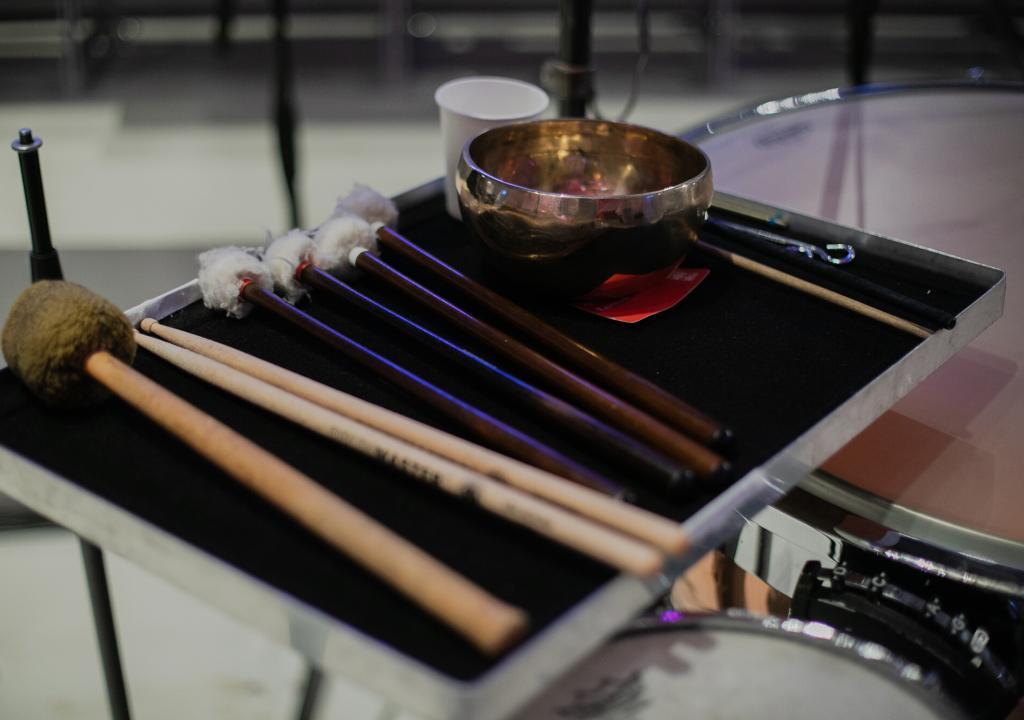
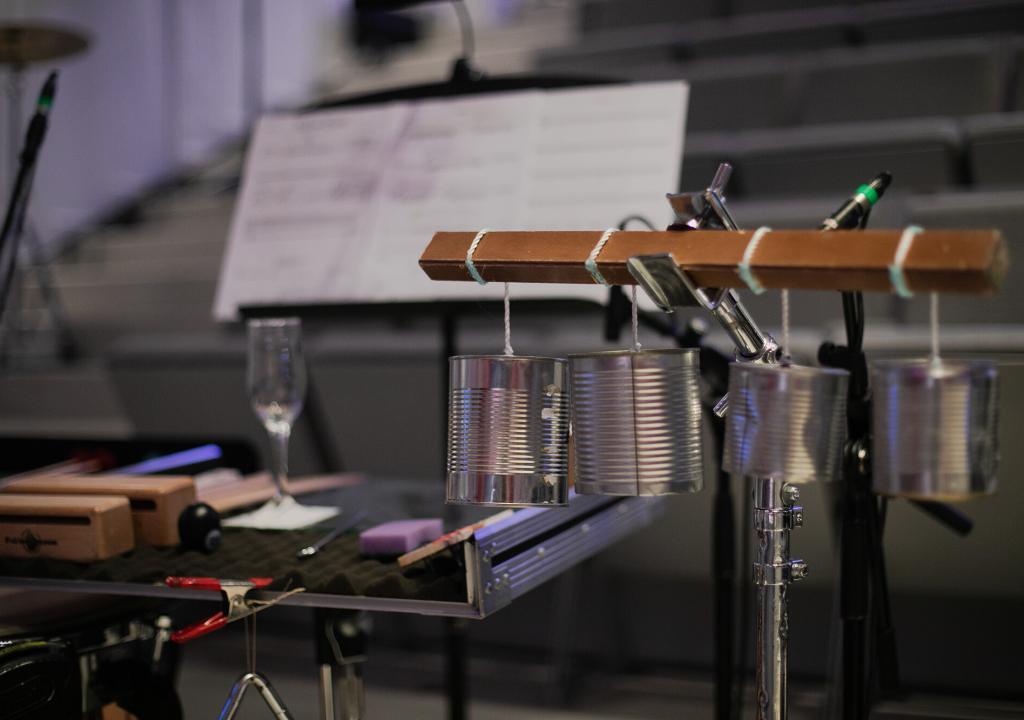

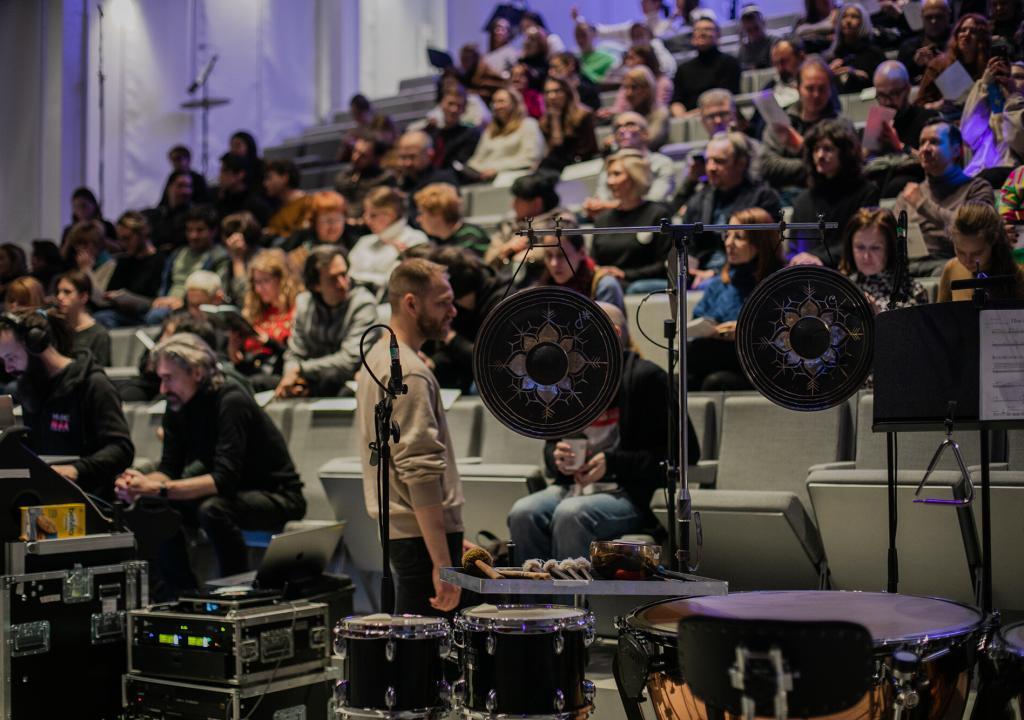

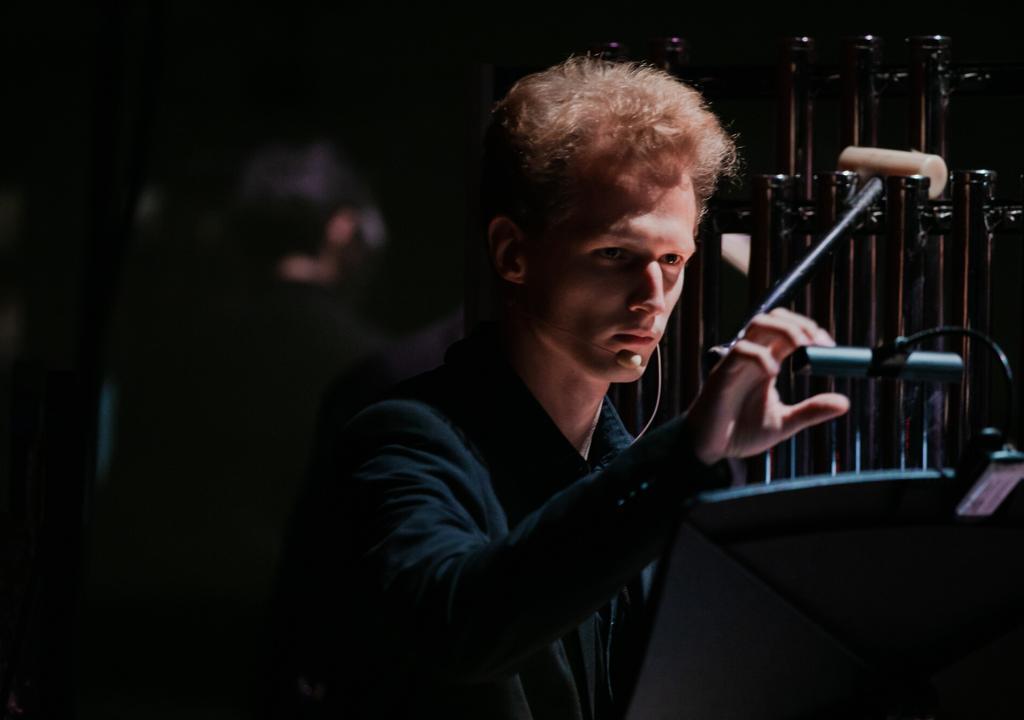
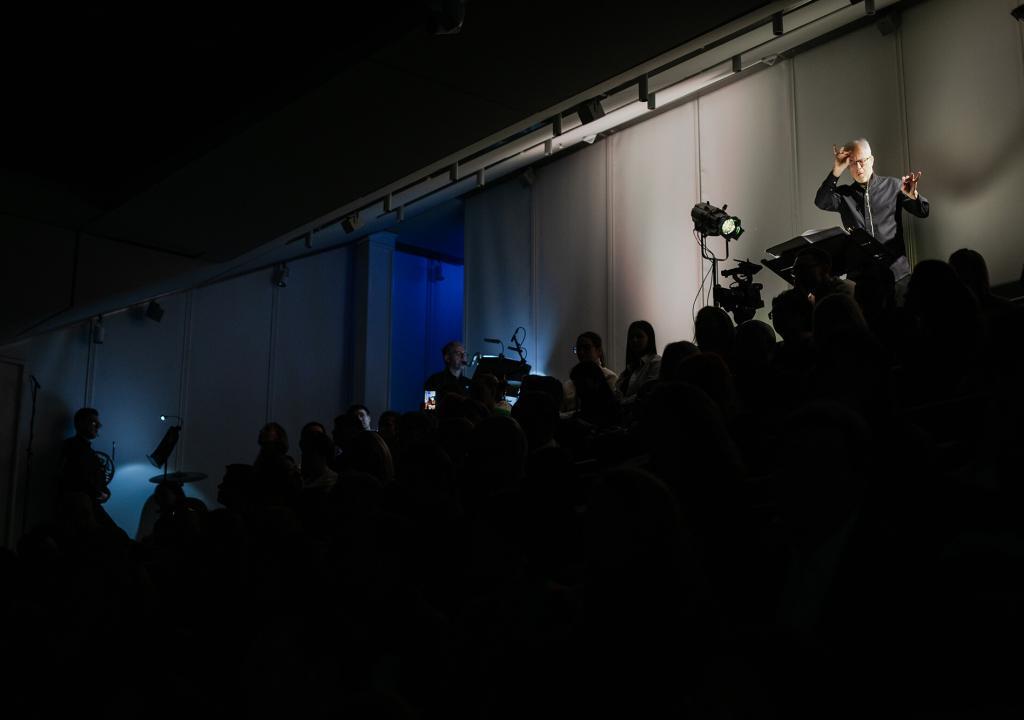


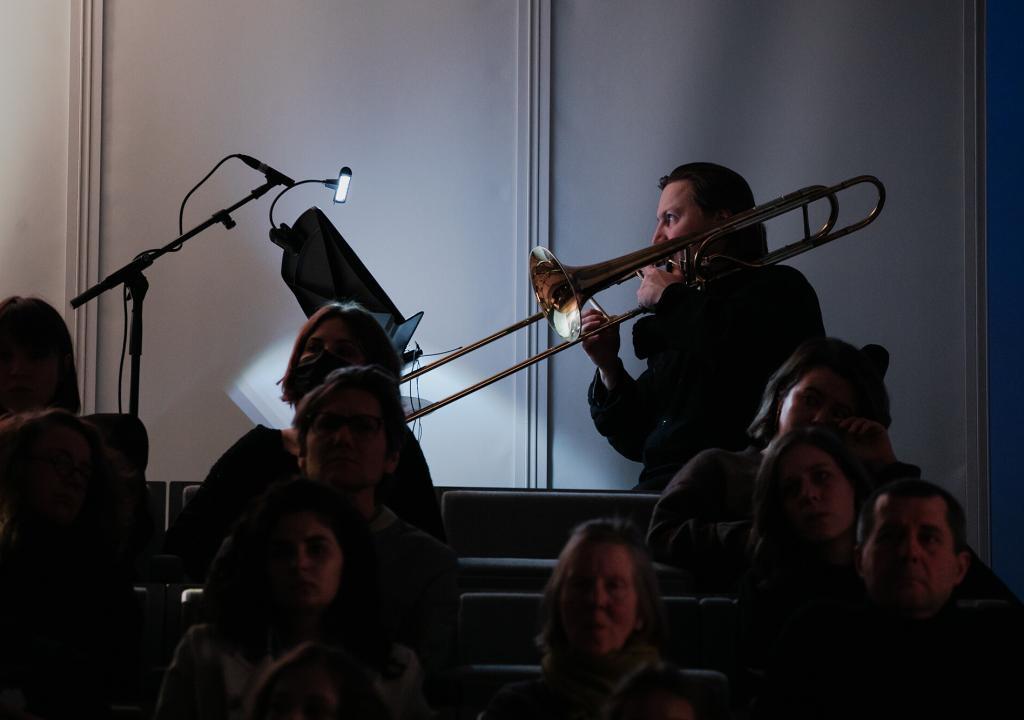
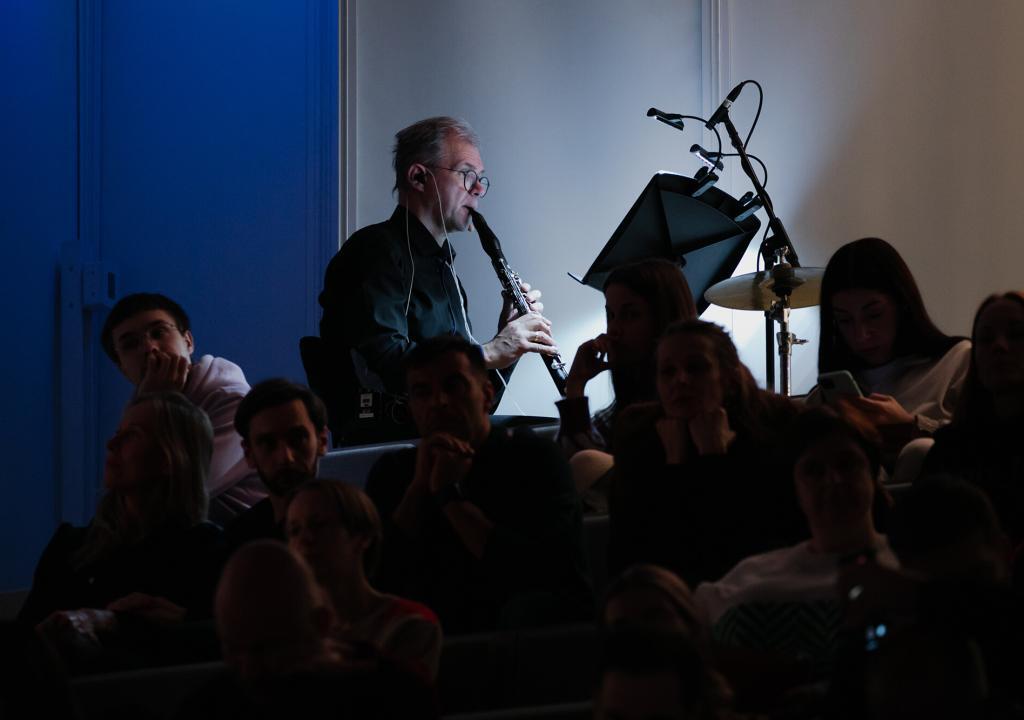
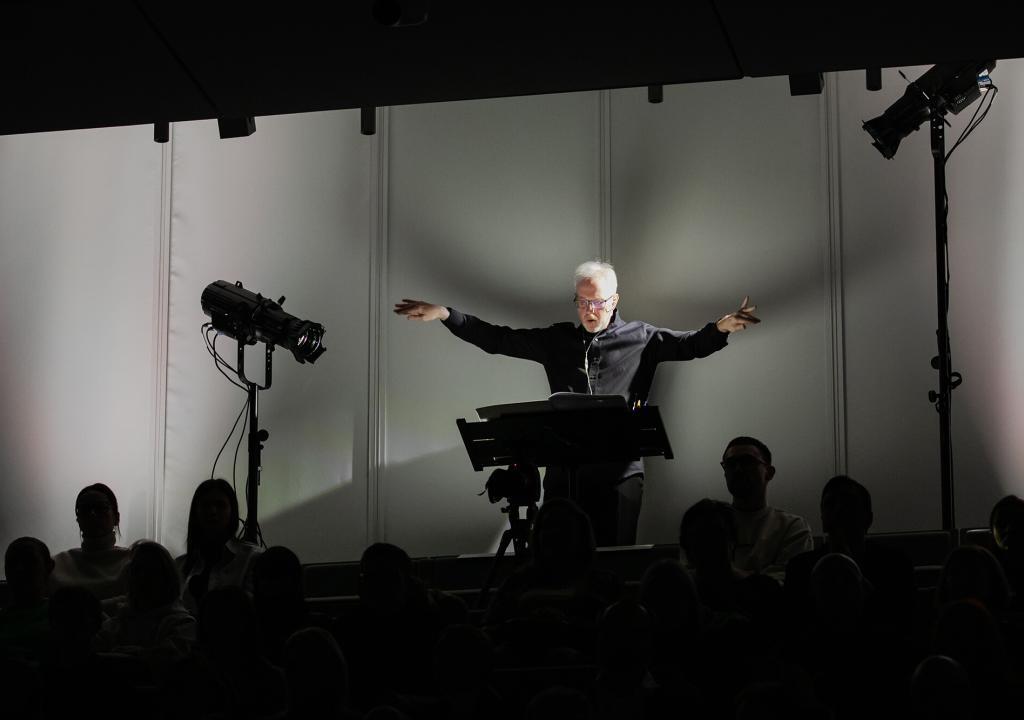
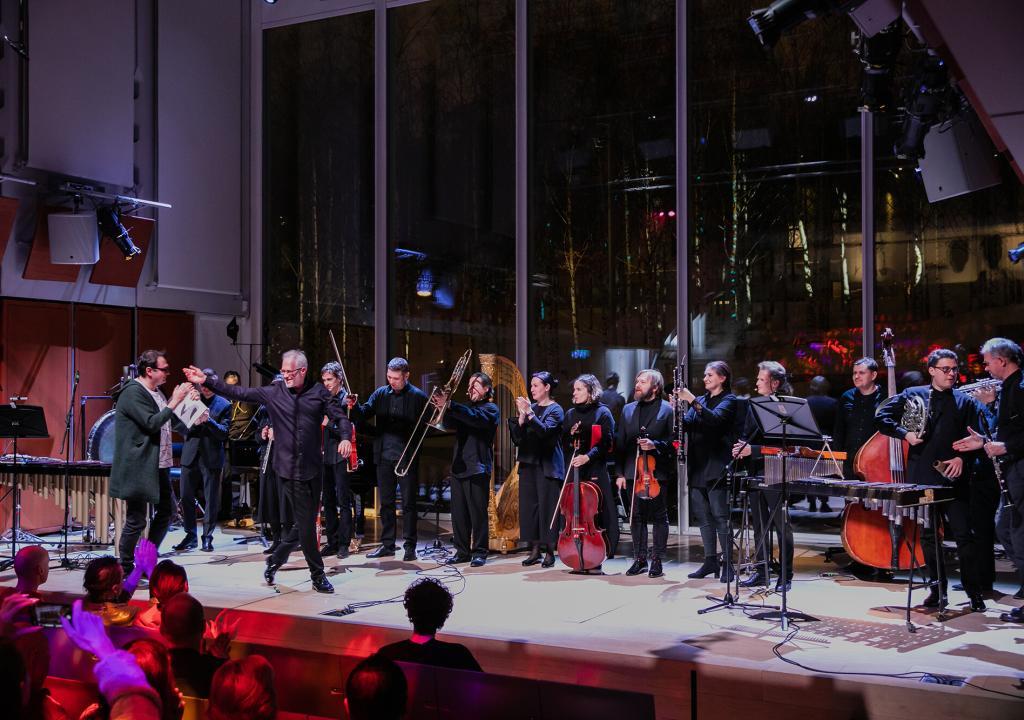
However, the musicians were audible to us directly. So, next to me was violist Emil Salaridze, and directly behind me was trombonist Andrian Princev. Accordingly, viola and trombone prevailed in my sound picture of the piece, while other listeners had a different picture. Which one is correct? The composer consciously does not answer this question, in which we can find one of the main signs of his style: in other cases, he puts listeners in different rooms, or some in the hall and others in the yard. Can we then assume that they are listening to the same and the same work? Of course, but it is the same in our life: one lives in Moscow, the other in the village of Shushenskoye, and everyone have their picture.
Another constant feature of Vladimir Gorlinsky’s thinking also showed throughout the piece. The composer mainly uses avant-garde techniques, but he is not an avant-garde artist. Toward the end, something like a madrigal was heard – and then it became clear that the play by Gesualdo – Sciarrino was played in the beginning for a reason. Then the consonances began to take shape in the likeness of pathetic chords, reminiscent of something from the classics – and the historical context immediately dawned. Toward the end, the instrumentalists sang – this is also Gorlinsky’s trademark technique. Conductor Fyodor Lednev, standing behind the audience, was reflected in the glass above the stage and was vaguely similar to a skier who had left the House on the Embankment and set off on a winter journey.
Finally, Gorlinsky knows that, although we love to listen to music in long pages with piano and pianissimo, we also need to arrange a hurricane fortissimo once. Two sets of timpani were not enough in the overall climax, and then we realized why next to each performer, be it a vigorous trumpeter or a fragile cellist, there was a hanging cymbal, and a hard stick was prepared. I remember that another composer, Vladimir Rannev, had a symphonic composition where the entire orchestra switched to triangles: the score “The Strongest” from the series “Russian Music. 2.1” in 2021. Vladimir Gorlinsky then heard the named composition, which suggests that he is a real traditionalist and creatively implements the experience of his older comrades and the entire centuries-old musical culture.
Petr Pospelov
The original: https://muzlifemagazine.ru/muzyka-dlya-aktovogo-zala/?ysclid=ldvsxxeoq7491161054
